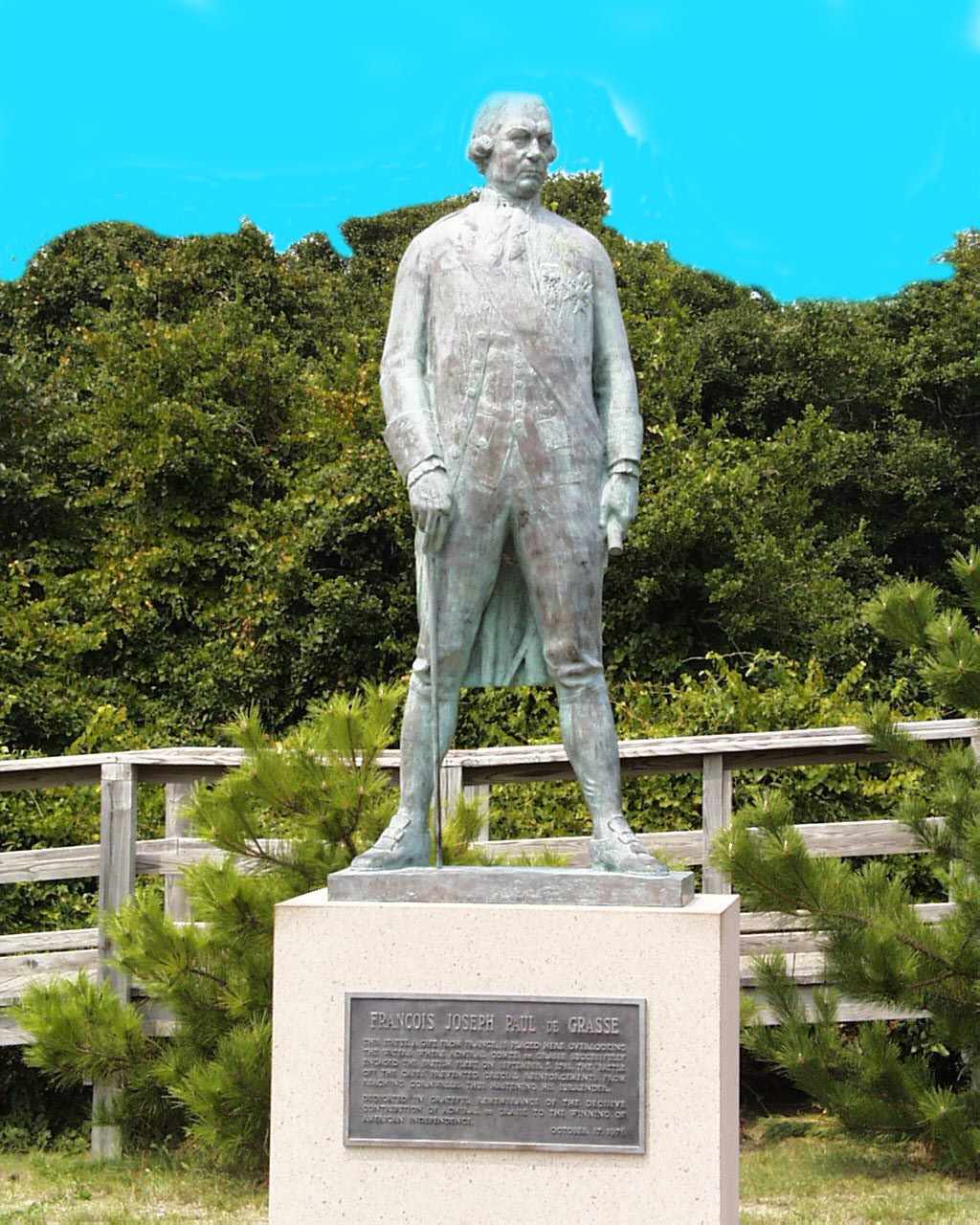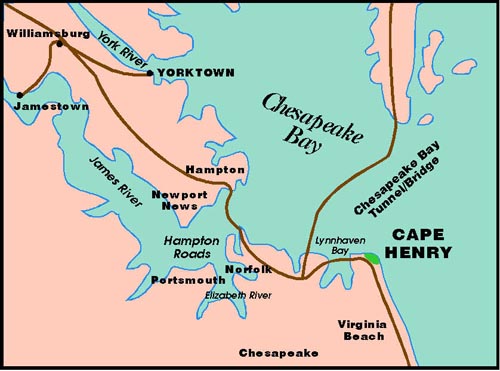|
Memorial to the 'Second Battle of the Virginia Capes (1781)', Cape Henry Virginia |
|
BRIEF HISTORY of CAPE HENRY VIRGINIA
On April 26, 1607, three small ships with 104 sea-weary English colonists laid eyes upon the shores
of Virginia. Captain
Christopher Newport, admiral of the fleet, brought his ships to anchor within the protected
waters of the bay. Sent by the Virginia Company of London to explore and establish a new
English colony, Newport, Edward Maria Wingfield, future President of the ruling council,
Bartholomew Gosnold, a member of the council, and about 30 others, ventured ashore. What
they found, according to George Percy, were "fair meadows and goodly tall trees, with
such fresh waters running through the woods as I was almost ravished at the first sight
thereof." Near the end of the day, as these intrepid adventures returned to their ships,
they encountered some Indians and a conflict erupted that left two of the English wounded.
The following day, a second group went ashore and began construction of a small boat,
known as a shallop. On April 28 the shallop was launched, and exploration of the lower
Chesapeake Bay began. The colonists scouted by land as well and Percy reported, "We past
through excellent ground full of Flowers of divers kinds and colors, and as goodly trees
as I have seene, as Cedar, Cipresse, and other kinds... fine and beautiful Strawberries,
four time bigger and better than ours in England." However, the company's instructions
were explicit: they were to lay the foundations of this new colony farther inland, away
from the threat of Spanish interference.
According to Percy "The nine and twentieth day we set up a
cross at Chesupioc Bay, and named the place Cape Henry." Here, on the windswept sands,
led by their chaplain Reverend Robert Hunt, the colonists must have knelt in prayer giving
thanks for this new land and their safe voyage. Now they were ready to follow the company's
instructions and push deeper into Virginia and seek a suitable site for settlement. The
site selected was named Jamestown, in honor of their King, James I and would become the first permanent English settlement in North America.
MONUMENTS
Cape Henry Memorial, a part of Colonial National Historical Park, is administered by the
National Park Service (NPS). This quarter acre of ground marks the approximate site of the first
landing of the Jamestown settlers in Virginia. A memorial cross of granite was erected in
1935 by the Daughters of the American Colonists to commemorate the site where a cross was
erected by those early adventurers in the spring of 1607. There is also a statute of
Admiral Comte deGrasse, a granite memorial to the Second Battle of the Capes, and a walkway leading
to the top of the sand dunes where one can overlook the Atlantic Ocean and the entrance to
the Chesapeake Bay.
LOCATION
Located on the south side of the Chesapeake Bay, Cape Henry Memorial sits within Fort
Story Military Reservation, 10 miles east of Norfolk and 3 miles north of Virginia Beach.
From Interstate 64 take Northhampton Boulevard (U.S. 13) towards the Chesapeake Bay Bridge.
Then take Shore Drive (Route 60) South and turn into Fort Story Military Reservation. The
memorial is open all year without an admission fee. Entrance is by visitor pass issued by
military personnel at Fort Story. The site is unattended by the National Park Service, and
there are no facilities or special services available. The Cape Henry stamp for your
National Park Service "Passport" book is located at the NPS Yorktown Battlefield Visitor
Center gift shop. Adjacent to the memorial, but not a part of it, is the first lighthouse authorized
by the Federal Government. Construction was begun in 1791, and the lighthouse was lighted
in October 1792. An octagonal tower of cut stone, the lighthouse served until 1881 when a
new one was built nearby. The tower, a Registered National Historic Landmark, is
administered by the Association for the Preservation of Virginia Antiquities (APVA).
Admission fee required. |
|
[Much of the foregoing text was taken from the a 3 July 1999 NPS webpage. Page layout was rearranged to emphasize the 1781 events.] |
|
|
| Page created 20 December 2001; revised 26 December 2001. |

